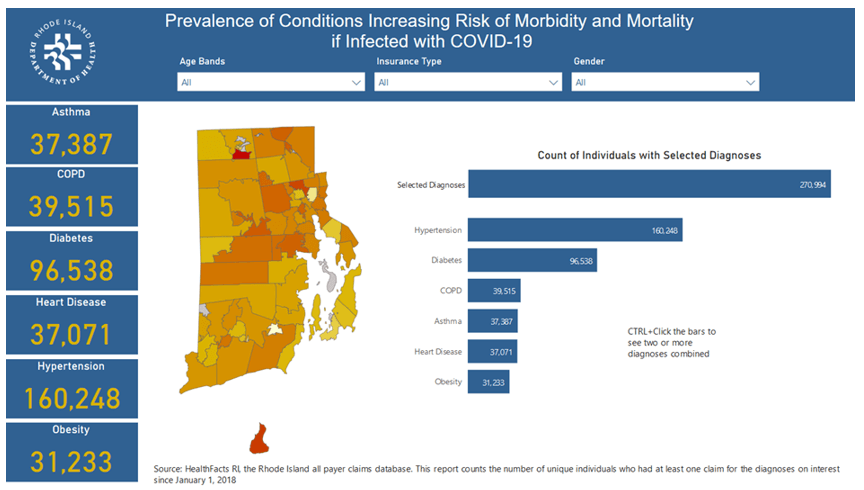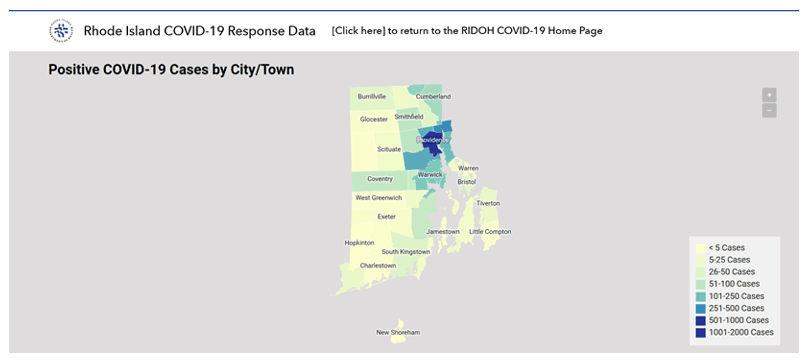Using APCD Data to Identify Populations at High Risk for Severe COVID-19 Outcomes
As states and municipalities evaluate when to relax social distancing measures and prepare for a phased re-opening, they must be able to document a sustained reduction in current cases and confirm their ability to effectively test and treat new cases without crisis.
Successfully preparing for future outbreaks or waves of illness requires the ability to identify geographic areas where there are concentrations of people whose age or comorbidities make them more likely to experience severe COVID-19 outcomes. All payer claims databases (APCDs) include the age and diagnosis history for most individuals in a state and typically, the ability to map those individuals by zip code. APCDs also include individuals’ medication history. Recent chemotherapy or use of other medications that may compromise the immune system is another risk factor identified by the Centers for Disease Control and Prevention.
The availability of all these data within a single source makes APCDs a rich source of information to better understand which communities within a state may be most likely to experience higher rates of severe illness and in turn, may need increased availability of healthcare professionals, ventilators, personal protective equipment and other resources. Historical APCD data works well for these analyses as chronic condition prevalence and other risk factors typically do not change month to month or quarter to quarter on a population basis. Data on utilization since the pandemic began is not necessary for these analyses.
The Behavioral Risk Factor Surveillance System (BRFSS) is another potential source of information on certain risk factors for severe COVID-19 outcomes. BRFSS, which is based on telephone survey data from state health departments, offers insights into health-related risk behaviors and chronic health conditions. However, the time-intensive nature of survey data collection often results in sampling only a small percentage of a state’s residents. Nationally, about 1 percent of U.S. residents are sampled. These relatively small sample sizes can produce results with large confidence intervals and make it difficult to understand variation across geographies or other populations.
Hospital discharge data sets could also be used to gather some information on COVID-19 severe outcome risk factors, but they typically do not include diagnosis data gathered in outpatient settings or data on outpatient medication use.

Examples from Rhode Island
Figure 1 below shows a series of maps produced by the Rhode Island APCD showing the prevalence of four risk factors known to increase morbidity and mortality from COVID-19. The last map “any high risk factor” plots all four risk factors on a single map.
Figure 2 below shows current case rates in Rhode Island. The map showing risk factors aligns with the map of current case rates, which would be expected as those with more serious cases of COVID-19 are more likely to have their diagnosis confirmed through testing.
Figure 1

Figure 2

For more information or assistance creating similar analyses for your APCD, contact Mary Jo Condon at [email protected]
